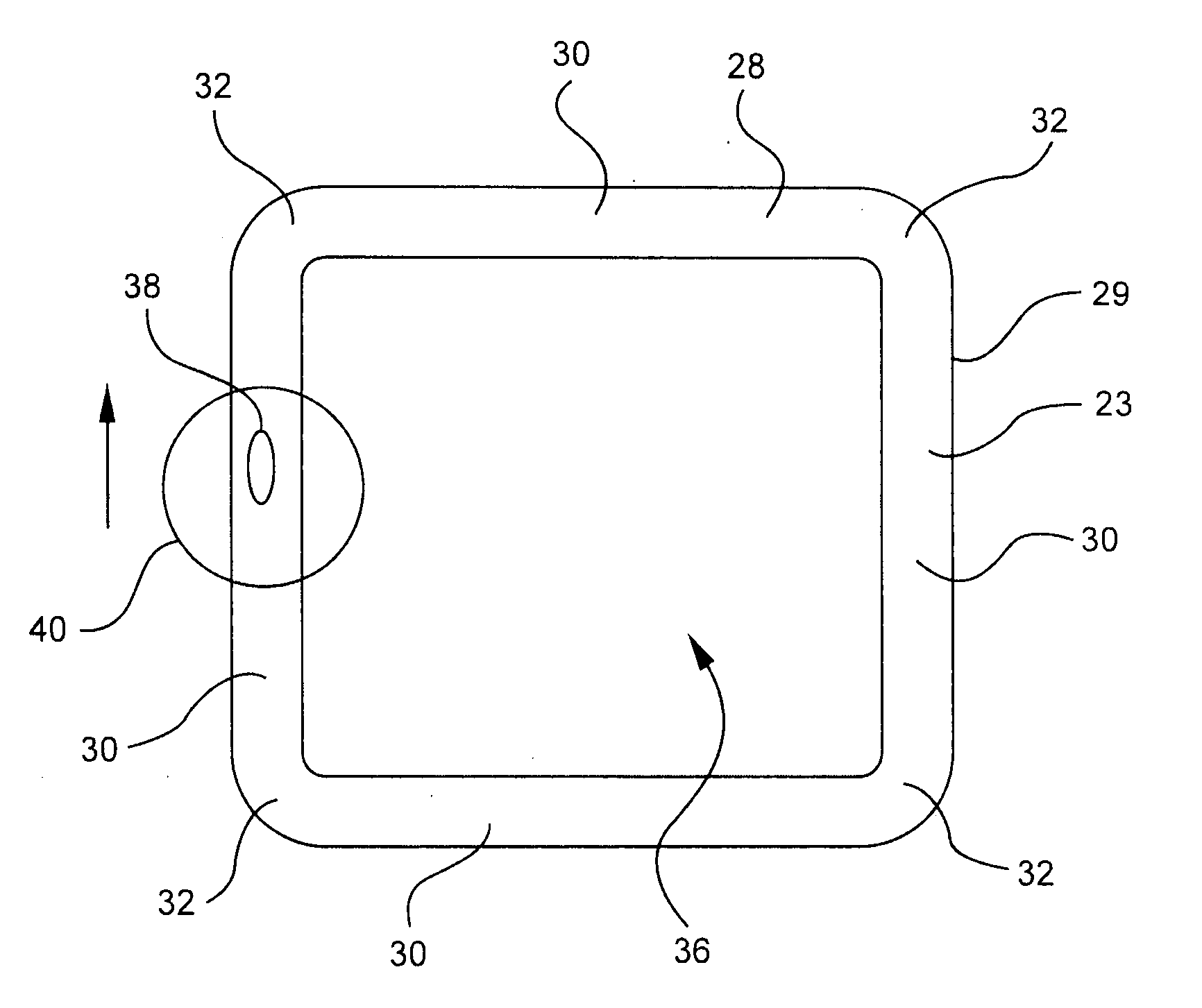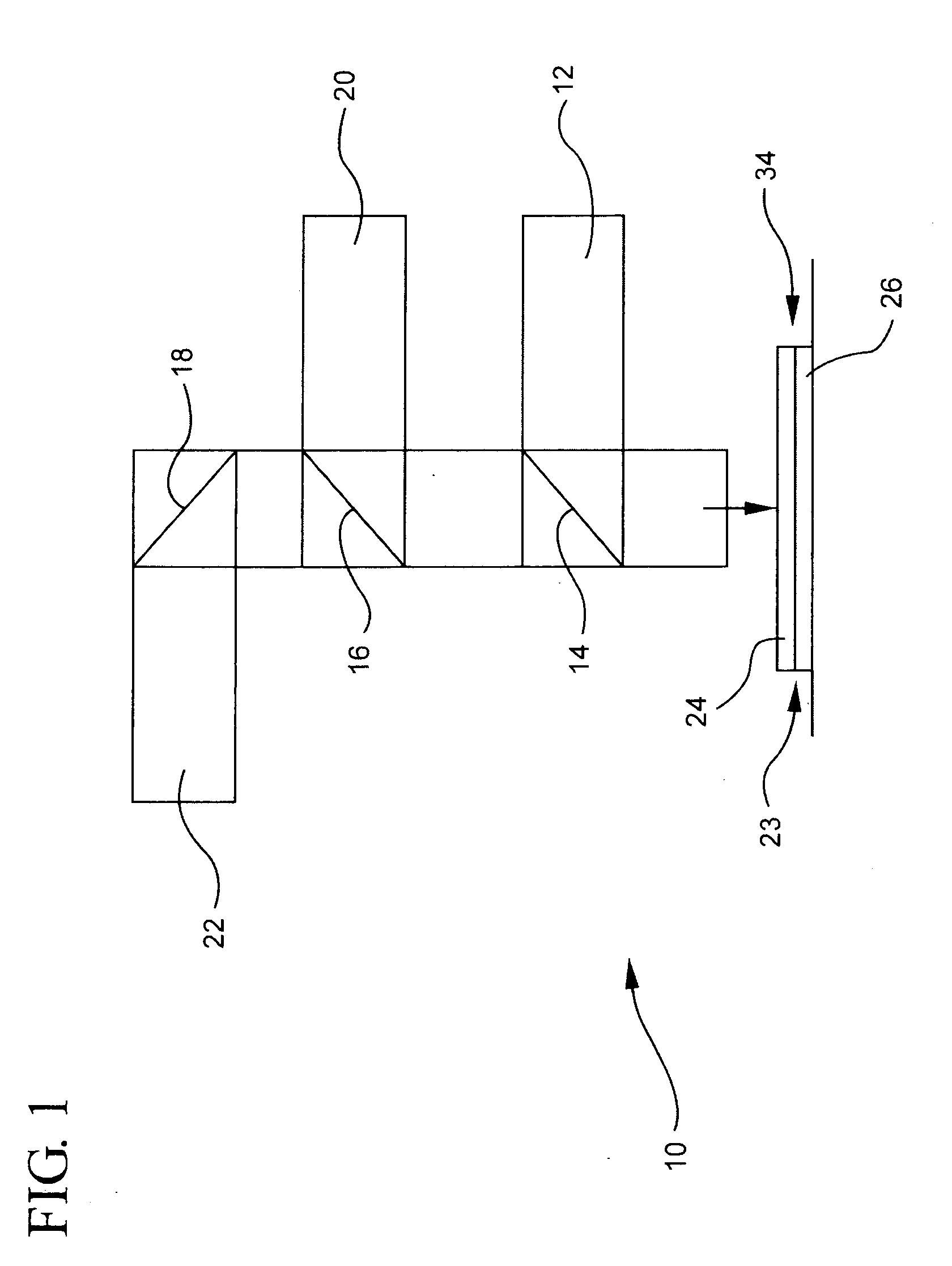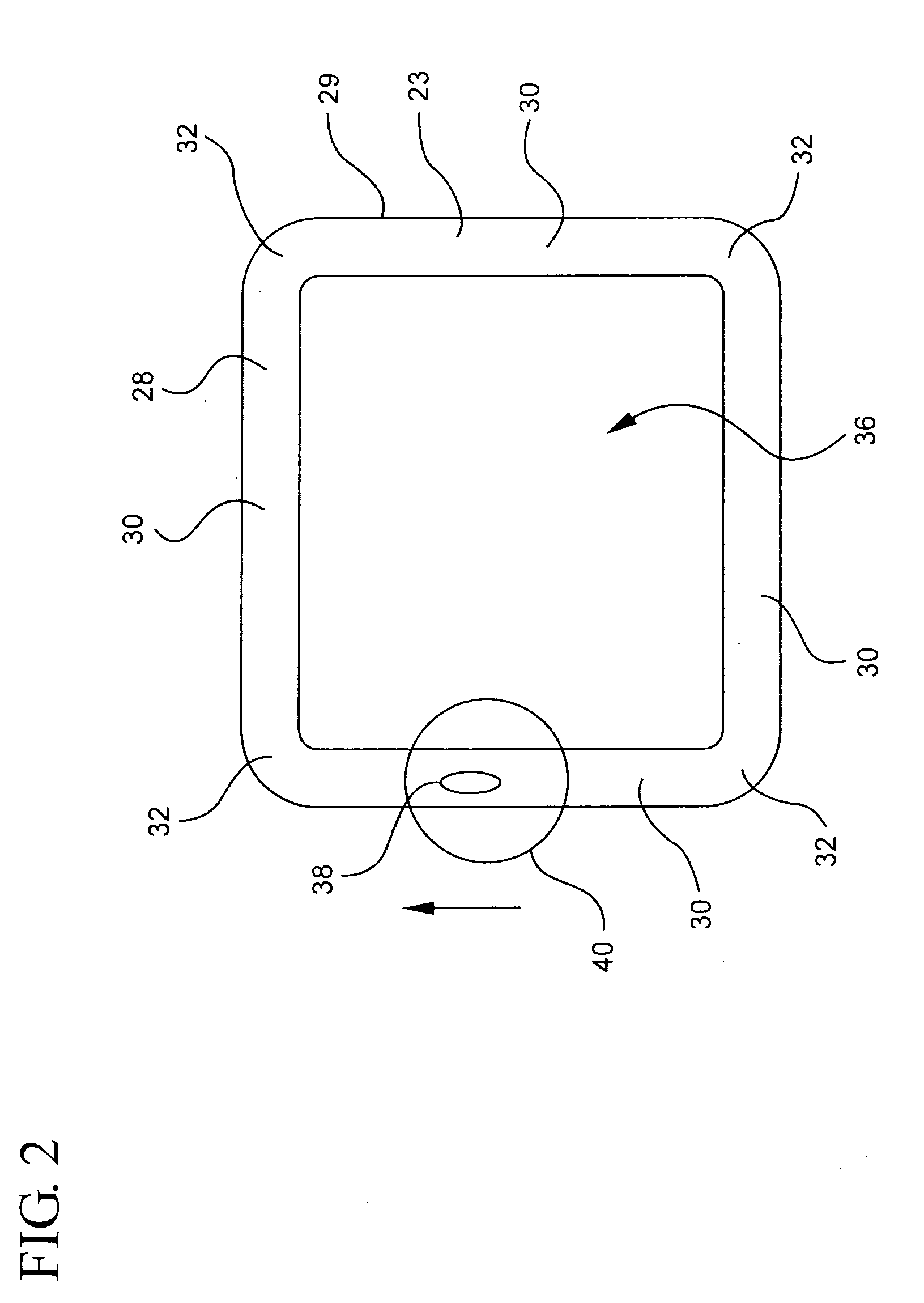Quality control of the frit for OLED sealing
a technology of quality control and frit, which is applied in the field of quality control of frit for oled sealing, can solve the problems of difficult development of sealing process, oled display, and organic layer located therein susceptible to degradation, and achieve the effects of improving process control, good quality and quantity of information, and reducing defects
- Summary
- Abstract
- Description
- Claims
- Application Information
AI Technical Summary
Benefits of technology
Problems solved by technology
Method used
Image
Examples
example 1
[0051]FIG. 3A shows a typical temperature profile using a thermo-detector on a laser sealing head described above as generally shown in FIG. 1. For this and the other examples, the laser power was 27-30 W and the laser beam was moved around the frit frame lines at a speed of 50 mm / sec. The frit frame lines were pre-sintered onto the cover display glass (heating from room temperature to about 450° C.). The frit on the cover glass sheet was sintered to the substrate display glass sheet by laser sealing. Both the cover sheet and substrate glass sheet were Corning Eagle XG® glass. The substrate had no OLED displays formed on it.
[0052]FIG. 3B shows the direction of frit dispensing from a micropen dispenser: in the clockwise direction from the dispenser start to the dispenser stop position (dispenser start-stop, DSS). The laser was moved during sealing and thermal detection from the laser start to the laser stop position (laser start stop, LSS). While traveling around the cell, the laser ...
example 2
[0053]FIG. 4 shows the results of a correlation study between a signature temperature spike (high and narrow peak) and surface contamination on the frit line. The glass surface contaminant leads to different laser energy absorption. Here, the temperature spike was a signature for a defect. The surface contamination on the glass was so bad that the laser light did not fully reach the frit, resulting in a peak in temperature. Normally, as was the case here, a temperature spike results from glass surface contamination and does not represent a frit line defect.
example 3
[0054]FIGS. 5A and 5B correlate temperature peaks and damaged frit lines. Temperature changes were seen in the thermal profiles of FIGS. 5A and 5B. The presence of a temperature spike (circled) is normally not determinative of whether there is a frit defect. In this rare situation, however, the surface defect of the glass (seen as a smear or scratch) was so severe that the laser light was blocked from reaching the frit and a frit line defect resulted.
[0055]FIG. 5B was an example of a glass surface defect and a minimal thermal response. The smear on the cover glass that was located on the cell that produced the thermal signature of FIG. 5A was actually also located on the cell that produced the thermal signature of FIG. 5B. Here, the smear and the minimal frit line damage to the cell were observed by the optical microscope first. This frit line damage did not impact OLED display performance. Next, the thermal response curve was analyzed (FIG. 5B), showing a peak (circled) that was so...
PUM
| Property | Measurement | Unit |
|---|---|---|
| thick | aaaaa | aaaaa |
| thick | aaaaa | aaaaa |
| temperature | aaaaa | aaaaa |
Abstract
Description
Claims
Application Information
 Login to View More
Login to View More - R&D
- Intellectual Property
- Life Sciences
- Materials
- Tech Scout
- Unparalleled Data Quality
- Higher Quality Content
- 60% Fewer Hallucinations
Browse by: Latest US Patents, China's latest patents, Technical Efficacy Thesaurus, Application Domain, Technology Topic, Popular Technical Reports.
© 2025 PatSnap. All rights reserved.Legal|Privacy policy|Modern Slavery Act Transparency Statement|Sitemap|About US| Contact US: help@patsnap.com



